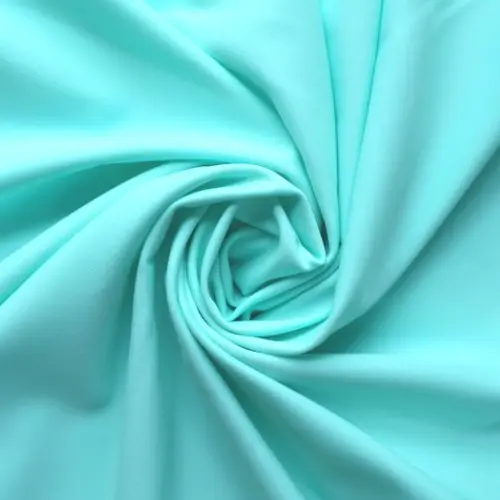The fashion world is buzzing with the debate over the best swimsuit fabric, yet the options are surprisingly limited. Swimwear fabrics must generally meet criteria such as quick-drying capabilities, colorfastness, and a requisite level of stretch. With this knowledge, choosing the ideal swimsuit material for your needs will become straightforward!
Different Types of Swimsuit Fabrics
It’s time to dive into the world of swimwear with “Different Types of Swimsuit Fabrics,” an exciting exploration of the materials that define seaside style. From the sleek appeal of spandex to the breezy charm of nylon, each fabric tells a unique story of comfort, functionality, and fashion. Here we began to explore the secrets behind the threads, turning ordinary swimsuits into extraordinary pieces of wearable art.
Nylon:
Nylon is a synthetic fabric that is both strong and lightweight. It’s commonly used to manufacture various types of clothing, including activewear and swimsuits. The material’s durability and resistance to abrasion make it suitable for rigorous physical activities, while its lightweight nature ensures comfort during wear. Additionally, nylon dries quickly, making it a practical choice for swimwear.

Characteristics of Nylon:
Strong and durable
Lightweight
Quick-drying
Resistant to wrinkles and shrinkage
Smooth and silky texture
Related: Best Fabric For Women’s Underwear
Spandex (Lycra or Elastane):
Spandex, known as Lycra or Elastane, is a synthetic fibre celebrated for its exceptional stretchiness and elasticity. It is frequently blended with other fabrics to enhance flexibility and provide a snug fit to garments. Whether it’s a pair of leggings, workout gear, or form-fitting clothing, including spandex ensures ease of movement and a comfortable, body-hugging fit.
Characteristics of Spandex:
High elasticity and stretch
Excellent recovery and shape retention
Comfortable and form-fitting
Lightweight and breathable
Often blended with other fabrics for added stretch

Polyester:
Polyester is a versatile synthetic fabric widely recognized for its durability, wrinkle resistance, and quick-drying properties. This material is extensively used to produce various types of clothing, from everyday wear to sportswear. Its ability to retain its shape and resist wrinkles makes it a popular choice for travel-friendly garments, while its durability ensures long-lasting apparel.

Characteristics of Polyester:
Durable and resistant to wear and tear
Quick-drying
Wrinkle-resistant
Retains color well
Lightweight
Lycra Xtra Life:
Lycra Xtra Life is an advanced variant of spandex designed to offer enhanced durability, particularly against damage caused by exposure to chlorine. This makes it an ideal choice for swimwear, as it ensures that the fabric retains its stretch and shape even after repeated contact with pool water. The added resilience of Lycra Xtra Life extends the lifespan of swimwear, providing lasting comfort and style.
Characteristics of Lycra Xtra Life:
Enhanced durability
Excellent stretch and recovery
Resistant to chlorine and other harsh chemicals
Long-lasting elasticity
Maintains shape over time

Neoprene:
Neoprene is a synthetic rubber material known for its excellent insulation properties. This fabric is commonly used to produce wetsuits, providing warmth and flexibility during water-based activities. In aquatic environments, Neoprene provides comfort and protection since it maintains its insulating properties even when wet.

Characteristics of Neoprene:
Waterproof and buoyant
Excellent insulation
Flexible and stretchy
Resistant to UV rays and chemicals
Used in wetsuits and sportswear
Microfiber:
Microfiber is a delicate and lightweight synthetic fabric made from wonderful threads. This material is celebrated for its softness, breathability, and moisture-wicking properties. Microfiber is commonly used in activewear and undergarments, providing a comfortable and supportive feel during physical activities. Its ability to wick away moisture contributes to a dry and comfortable wearing experience.
Characteristics of Microfiber:
Soft and lightweight
Breathable
Quick-drying
Moisture-wicking
Durable and resistant to wrinkles

Related: Best Fabric for Men’s Underwear
Cotton Blend:
A cotton blend refers to fabrics that combine cotton with other fibres, such as polyester or spandex. This blend aims to enhance the positive qualities of cotton while addressing its limitations. For example, adding spandex can provide stretchiness, making the fabric suitable for activewear or garments that require flexibility. Cotton blends offer a balance of comfort and additional features tailored to specific clothing needs.

Characteristics of Cotton Blend:
Soft and comfortable
Breathable
Absorbent
Durable when blended with other fibres
May have added stretch for improved fit
Jersey Knit:
Jersey knit is a type of fabric characterized by its stretchiness and soft texture. This knit fabric is commonly used in the production of T-shirts and casual wear, as it offers a comfortable and breathable feel. The stretchiness of jersey knit provides ease of movement, making it a popular choice for everyday garments where both style and comfort are priorities.
Characteristics of Jersey Knit:
Soft and stretchy
Comfortable to wear
Drapes well
Breathable
Commonly used in T-shirts and casual wear

Takeaways
The best swimsuit material lies in the balance between durability, comfort, and performance. Luxury swimwear fabrics provide excellent stretch for a snug fit, quick-drying properties for comfort, and resistance to fading and damage from chlorine or saltwater. Fabrics like nylon and polyester blends with spandex or elastane often strike the right balance, ensuring a long-lasting and comfortable swimming experience.




